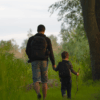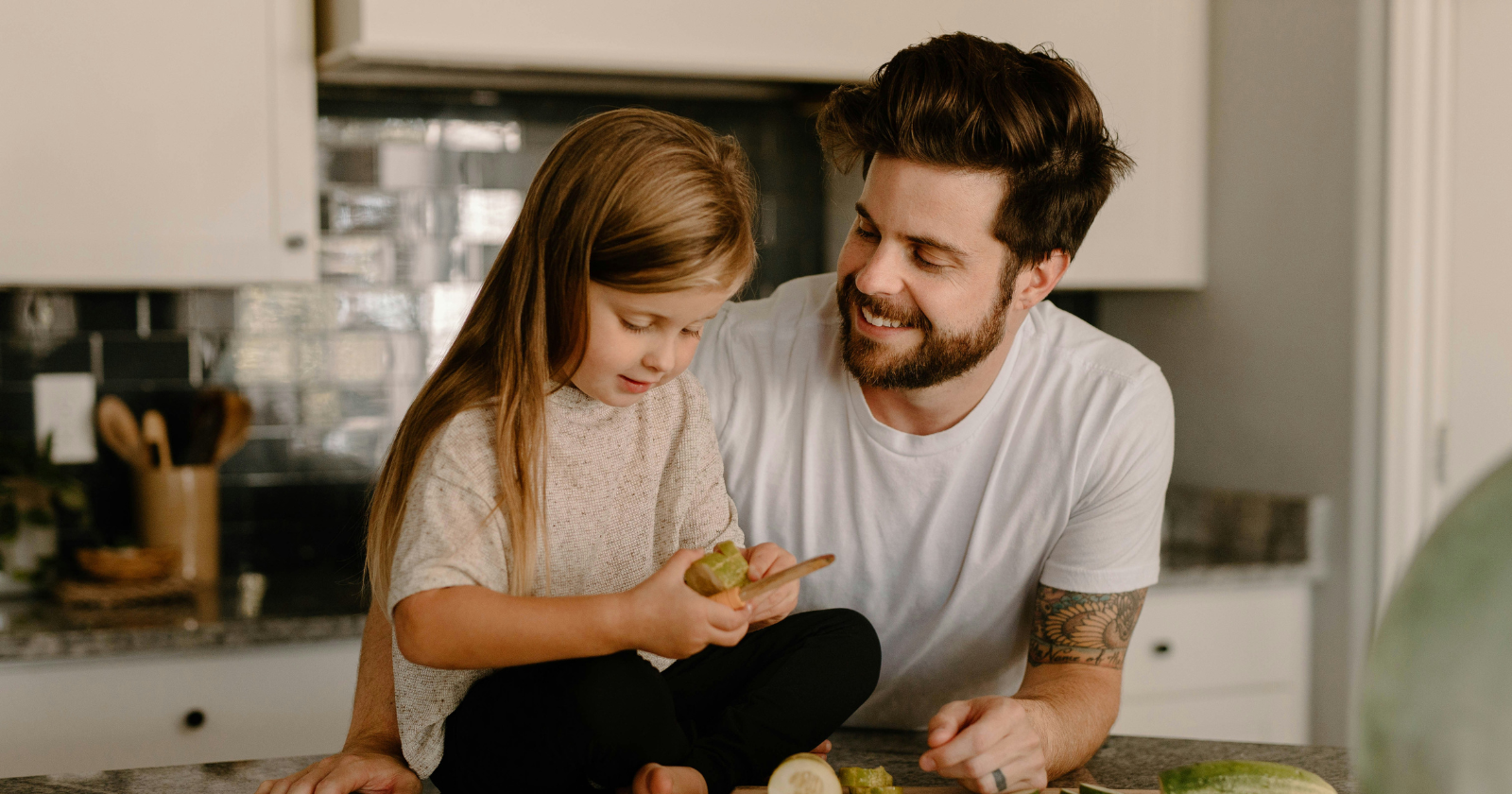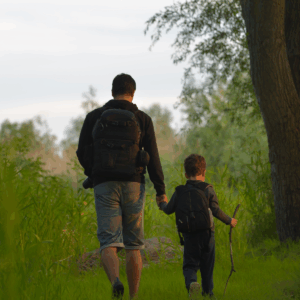Parenting looks different depending on where you stand in the world.
After raising my own kids and now walking the park paths with my grandkids, I’ve noticed a handful of patterns that tend to show up when you compare families across the Atlantic.
Of course, Europe isn’t one monolith and the U.S. isn’t either. But there are some broad habits and values that commonly diverge. Understanding them can help us borrow what works and leave what doesn’t.
I’m not here to crown a “winner.” I’m here to share what I’ve seen, what I’ve learned, and a few ideas you might want to try at home.
1. Independence starts earlier
When I visit friends in Europe, I’m always struck by how early kids are nudged toward self-sufficiency.
You’ll see a ten-year-old riding a bike to the bakery, a twelve-year-old taking public transit, and teens handling their own appointments. The message is clear: “We trust you to try.”
Here in the States, we tend to supervise more. Part of that is geography and culture—suburbs, long distances, safety fears. But some of it is habit. If we always drive, remind, pack, sign, and fetch, kids don’t get the reps they need to feel capable.
If your child is ready, test the waters. Could they walk to school with a friend? Pay for the groceries at the checkout? Order their own meal?
The earlier they practice low-stakes independence, the steadier they’ll stand in high-stakes moments later.
2. Meal times are about culture, not just calories
A memorable evening in Lisbon a few summers back taught me a lesson.
Our hosts set a simple table—vegetable soup, bread, olives, grilled fish—and lingered for nearly two hours. Their children, both under ten, sat with the adults, chimed in on conversation, and tried everything without fanfare.
Many European families treat the table like a classroom for life: taste, patience, conversation, manners. In the U.S., meals often become rushed refueling: eat in the car, heat-and-eat, separate kids’ menu.
No shame here—I’ve done plenty of chicken-nugget dinners. But the European habit of slow, shared meals builds comfort with real food and people.
Try one unhurried family meal this week. Phones away. Same food for everyone, with a polite “you don’t have to like it, but try a bite.”
You might be surprised how quickly kids rise to the expectation when we make the table inviting and predictable.
3. Play is freer, and risk is part of the lesson
“Don’t climb so high!” How many times have we said that?
In many European parks, you’ll find tall climbing structures, rope bridges, and tools for tinkering. The idea isn’t to court danger, but to teach kids to judge it. Scraped knees are treated as tuition for learning boundaries.
- If you know what these 8 old-fashioned words mean without looking them up, you’re more educated than 95% of people - Global English Editing
- The art of wealthy living: 7 habits lower middle class families never adopt - Global English Editing
- 8 simple moments that build deep connection - Global English Editing
American playgrounds tend to be safer by design—soft surfaces, lower heights, lots of supervision. Safety matters, of course.
But if we sterilize every environment, children never practice risk assessment. As I’ve covered in a previous post, resilience grows when kids meet real challenges and make small mistakes while an adult is still nearby to coach, not control.
The middle path? Choose environments that stretch your child a little. Spot them, don’t hover. Ask, “What’s your plan for getting down?” rather than barking, “Get down now!”
You’ll watch their judgment sharpen right before your eyes.
4. Schools partner with parents differently
In many European countries, teachers hold solid authority in the classroom, and parents give them a fairly long leash.
Homework is often lighter in the early years. The focus leans toward social development, outdoor time, and foundational skills before heavy academics. When issues arise, families tend to ask, “How can we support the teacher?” before assuming the system is wrong.
In the U.S., parents often step in quickly—emailing, advocating, requesting changes. That advocacy can be a strength. It can also overwhelm kids with the message, “You need me to fix everything.”
The European posture says, “School is your domain, and your teacher is your guide. I’m your backup, not your bulldozer.”
If you’re tempted to intervene, try starting with your child: “What do you think would help? What will you try first?” Then loop the teacher in with curiosity, not combat. You’ll build your child’s ownership of school life instead of outsourcing it to adult negotiations.
5. Discipline focuses on calm boundaries, not constant bargaining
During a tram ride in Amsterdam, I watched a little boy ignore his mother’s request to sit. She gently touched his shoulder, crouched to his eye level, and said a quiet “nee” with a firm look. He sat.
No lecture, no bribe, no countdown. Just a clear limit delivered without heat.
Across much of Europe, boundaries tend to be steady and unemotional. It’s not permissiveness—quite the opposite. It’s consistency without drama. In the U.S., we sometimes swing between helicopter and hands-off: plead, threaten, negotiate, then explode.
A simple formula works: short instruction, consistent follow-through, and natural consequences. “If you throw the ball indoors, we’ll put it away for the day.” No speeches. No shame.
As the old saying goes, “Mean what you say, say what you mean, and don’t say it mean.”
6. Extracurriculars are balanced with everyday life
I’ve noticed European families are less likely to stuff the calendar with activities, especially for younger children.
Soccer on Saturdays? Sure. Music lessons? Maybe. But evenings are often for family, friends, homework, and rest.
American families, on the other hand, can get swept into the race—travel teams, academic clubs, enrichment everything—because we fear missing out.
The unintended result is kids who are always busy but rarely bored, and boredom is where imagination and self-starting skills are born.
What if you left two evenings a week unscheduled for a month? Pull out board games, walk the dog together, or let kids tinker in their rooms. You’ll see creativity emerge—sometimes after a few “I’m bored” groans. That’s normal. Think of it as compost for curiosity.
7. The village is closer to home
In many European towns, social circles are hyper-local. Grandparents live nearby, neighbors know your name, and kids roam within a few safe blocks.
Community isn’t a program; it’s the default. Informal support—someone to watch the baby while you run to the pharmacy—makes everyday parenting lighter.
In the U.S., distance and car culture can make everything feel far away. We compensate with organized playdates and group chats. Nothing wrong with that, but it does take effort to build the “village.”
Can you shrink your world a little? Swap numbers with the parents next door. Start a Saturday morning scooter loop with the families on your street. Trade pickup duties with another household.
When help is around the corner, parenting feels less like a solo expedition.
8. Screens are treated like tools, not companions
I’m no Luddite—I’m typing this on a laptop, after all—but I’ve noticed European families often keep screens in their place.
Public spaces feature more analog entertainment: sketchbooks in cafes, card decks on trains, even tiny travel games in backpacks. Devices come out, but not as a reflex.
In America, screens are sometimes the default babysitter. We hand them over in the car, at the table, in the line at the store, because it works.
Short term, sure. Long term, it can crowd out conversation, patience, and the soft skills kids learn when they’re a little bored.
A gentle shift helps: create tech “islands” (a time and a place), not a tech ocean. Maybe it’s a family movie on Friday and a game hour on Sunday. Maybe it’s music on in the kitchen, not videos.
And here’s a trick that works with my grandkids: keep a “boredom bag” in the car—puzzle book, deck of cards, little notebook, colored pencils. It saves the day more often than you’d think.
9. Status matters less than steadiness
A friend in Vienna once told me, “We don’t ask kids, ‘What do you want to be?’ We ask, ‘What kind of person are you becoming?’”
That stuck with me. In many European circles, prestige—schools, trophies, future careers—doesn’t dominate family talk the way it sometimes can here.
American ambition is a powerful engine. It builds big things. But when childhood becomes a résumé factory, kids start measuring themselves by medals instead of character. They become fragile in the face of ordinary disappointment.
Try shifting your praise. Less “You’re so smart” and more “You worked hard on that.” Less “Did you win?” and more “How did you play? How did you treat your teammates?”
You’ll be watering the roots—grit, integrity, kindness—instead of polishing the fruit.
10. Childhood is allowed to be… childhood
Here’s the biggest difference I keep coming back to: many European families guard the simplicity of childhood. Kids walk, cook, shop, and help, yes—but they also wander, make forts, kick a ball in the courtyard, and climb trees.
There’s a quiet trust that unstructured time grows whole humans.
American parents sometimes feel pressure to make every moment “productive.” If we’re not instructing, enriching, or optimizing, we fear we’re falling behind. But children aren’t projects. They’re people. They need room to dawdle, dream, and do nothing in particular.
On my morning park loops with the grandkids, we’ve started a small ritual. We stop at the same big oak. They climb the low branch, hang there a bit, and tell me what they can see from “up high.”
It’s the simplest thing. No program. No progress chart. But it’s become one of the most important parts of their week—and mine.
Final thoughts
A quick note before I wrap up: none of this is about copying a country wholesale. It’s about noticing what works for families like yours and testing it gently. If you try to overhaul everything at once, everyone’s nervous system will revolt. Pick one area—meals, screens, independence—and make one change for a month. See how it feels. Adjust. Keep what helps.
A few starter ideas to bring these differences home:
-
Offer one new responsibility that matches your child’s age: paying at the store, walking the dog on your block, packing their own backpack.
-
Create one slow family meal per week. Light a candle. Ask one good question. “What was kind today?” works wonders.
-
Carve out two activity-free evenings. Let boredom knock. It will invite creativity in.
-
Replace one reflex screen moment (the car ride, the waiting room) with a boredom bag.
-
Shift one kind of praise from results to effort or character.
If you’re a regular reader, you may remember I once wrote about building “family culture” with tiny rituals. This is the same idea—just borrowing a few rituals that many European homes do well.
I’ll leave you with a line I often repeat to myself while watching families on those park benches: “Childhood is not a race; it’s a season.”
What small change will you make this season to help your child grow sturdy on the inside, not just shiny on the outside?



